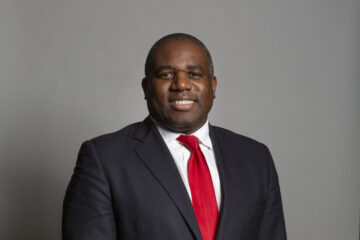With the dust settling on Israel’s fractious and tumultuous election for the 21st Knesset, albeit with the horse-trading of coalition building still in progress, it is valuable to examine the structure of the election and see how it influenced the result.
The Israeli electorate are given the choice of a political party to vote for rather than individual members of the Knesset; 2019 produced a record 47 slates on offer, all aiming for a share of the 120 seats. Some parties hold primaries for their members to choose the order of candidates on their list, although this is not compulsory.
For example, the candidates for the main challenger to Netayahu’s Likud, Blue and White were chosen without primaries, in private negotiations between former general Benny Gantz and centrist Yesh Atid’s leader Yair Lapid. By contrast, Likud, Labor and Meretz held primaries for party members to decide the order of candidates on the ballot paper.
Parties are allocated seats proportionally, provided they overcome the minimum threshold of 3.25% of the vote. The more votes a party gets, above that 3.25% threshold, the more seats in the Knesset the parties are allocated.
However, the party with the most seats is usually asked first by Israel’s President to attempt to form a government with its leader almost always becoming prime minister.
Hence tactical voting exerts a powerful pressure, as voters can be drawn towards backing a party that only broadly aligns with their values, but which is perceived as being closer to gaining the premiership, rather than smaller parties with whom they may have more instinctive sympathy.
In 2019 this most notably manifested itself with Benny Gantz’s Blue and White party cannibalising the Labor party’s support, as voters on the left saw him as having the greatest chance of toppling Netanyahu’s government. Blue and White won 35 seats while Labor was reduced to only 6, the worst result in its history.
Similarly, the New Right party’s shock failure to cross the 3.25% threshold may be attributable to a last-minute push by Netanyahu to consolidate the right-wing vote within Likud, arguing that his party alone was the only reliable home for right-wing voters. Consequently, Likud’s increased 35 seats, up from 30 in 2015, came at the expense of their former coalition partners.
However, some voters are more interested in preserving their sectional interests rather than choosing the prime minister; the ultra-Orthodox religious parties have long served as coalition partners and extracted financial and legal privileges for their communities as a price for propping up successive governments. For example, a key issue for them involves maintaining the exemptions from military service for their community, despite the wide public opposition; their ability to collapse governments wards off attempts to change the policy.
These policy extractions highlight a key feature of the Israeli electoral system: the focus on post-election horse-trading and backroom deals. No party has ever gained an overall majority in the Knesset and so negotiations over ministerial portfolios and policy matters are a permanent feature of Israeli politics.
This reduces the role of manifestos as no party can guarantee that their legislative programme can be implemented in full. Instead this encourages a focus on leadership and who can be trusted to lead Israel through difficult times.
The ongoing security situation encourages this dynamic, especially for Netanyahu who in successive elections has centred his election campaign around his perceived strength over security issues. His 2015 campaign, for example, featured a viral online campaign advert, ‘the Bibi-sitter’ which explicitly argued that only Prime Minister Netanyahu can keep the voters’ children safe.
Discontent over issues like the rising cost of living are thus subsumed by the overriding priority to preserve Israel’s security. Ultimately, beyond all the structural effects of the electoral system, it is the conflict that shapes Israeli elections and Israeli politics.
Daniel Katz

